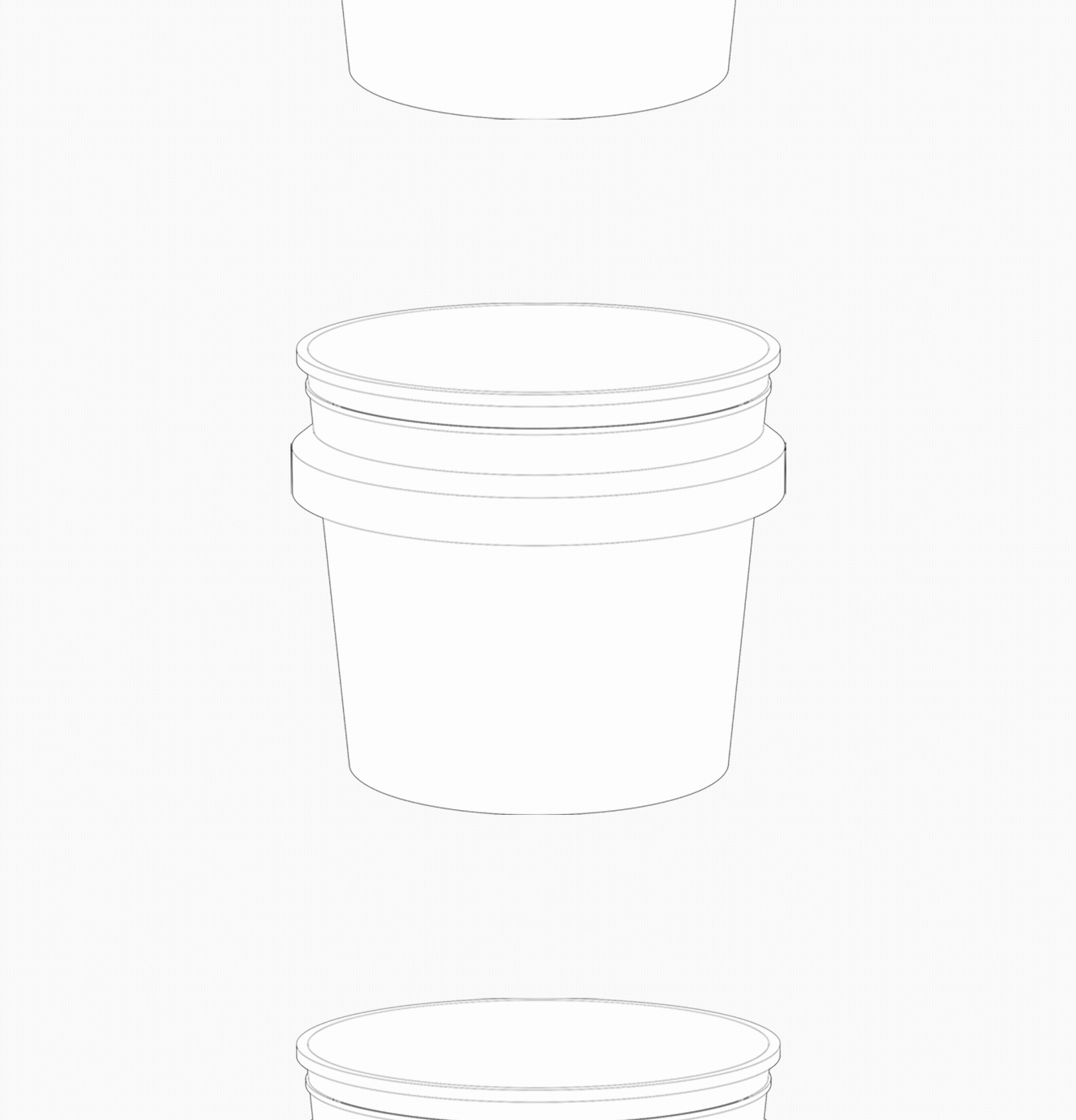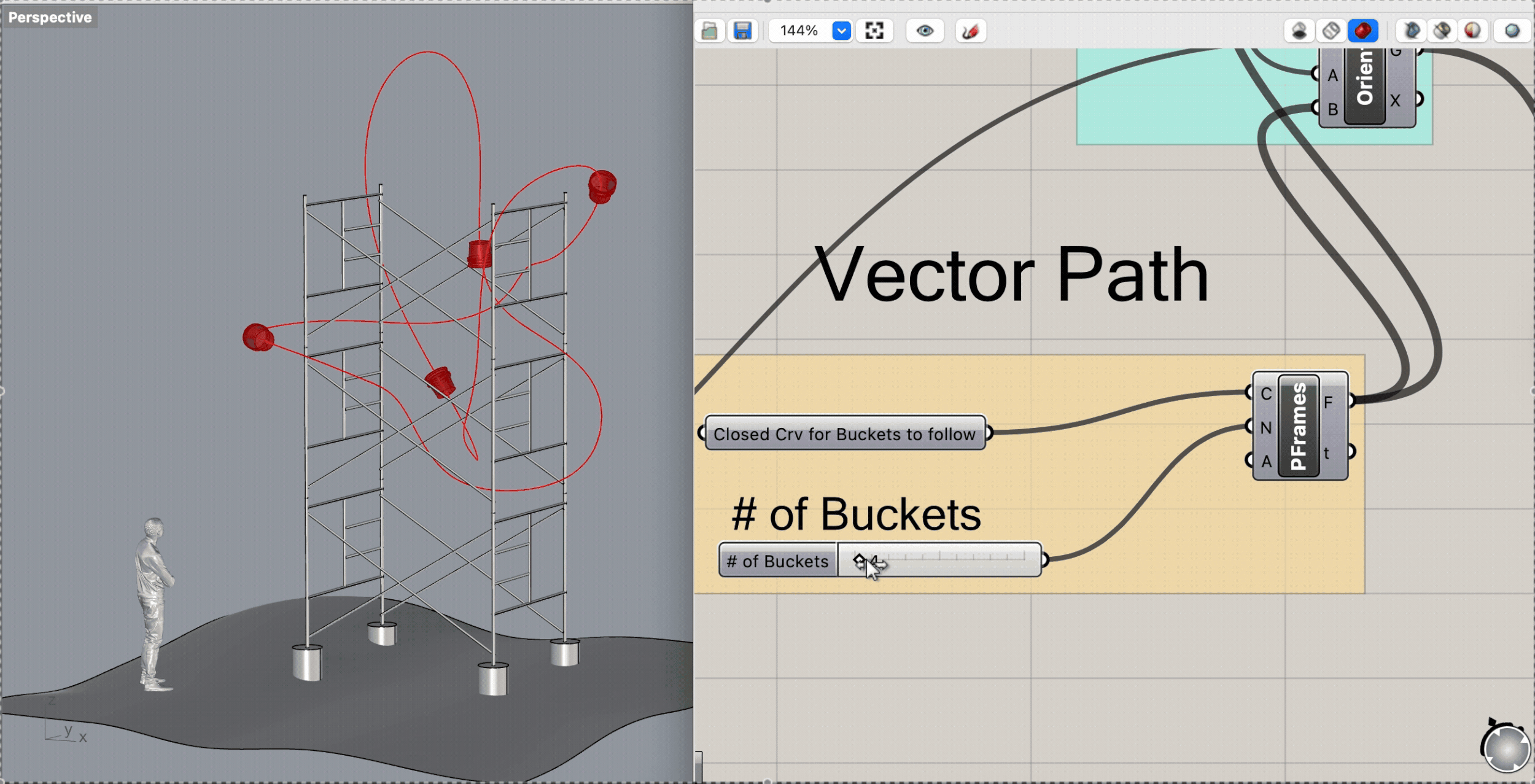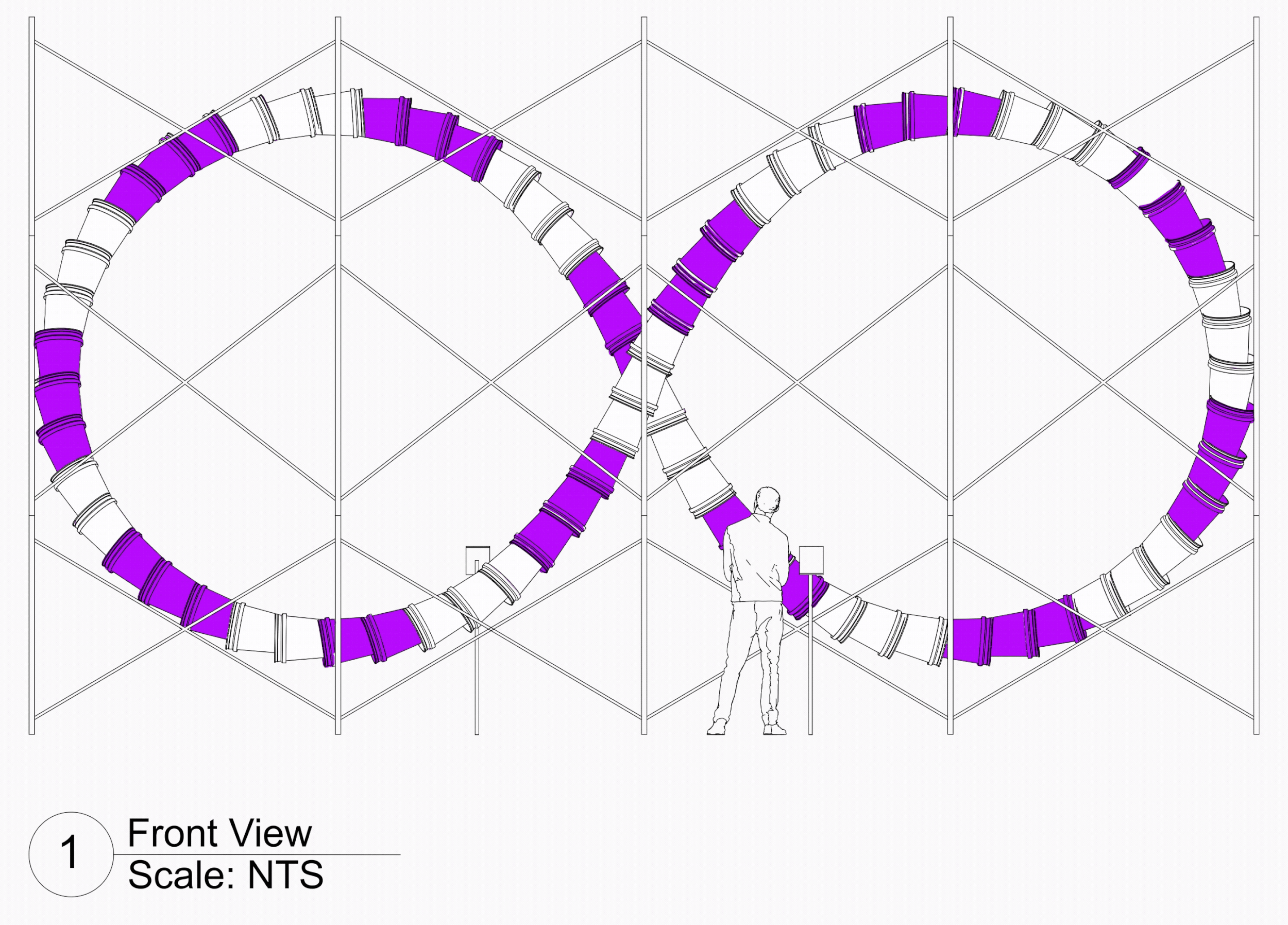I'm Kai Kopitzke, a designer with six years of professional experience using CAD to create everything from architectural wall paneling to custom lighting, and electronic audio housings.
I am skilled in tools like Rhino 3D, SolidWorks, Fusion360, AutoCAD, and more, I bring ideas to life through 3D modeling, digital and physical prototypes, fabrication, and collaborative problem-solving. Let's make something extraordinary together!
Hello!
Modern Sculpture P1
by Jason Peters
I had the opportunity to collaborate with artist Jason Peters to develop CAD models for a series of sculptural installation proposals. The sculptures—built from stacked 3- and 5-gallon buckets threaded with programmable lights—form looping, expressive structures that glow at night.
To support Jason’s creative vision, I used Rhino 3D along with Grasshopper to streamline the design process. I built a parametric definition that allowed a sequence of buckets to follow a user-defined path in 3D space. Each bucket was automatically oriented so that its base remained perpendicular to the curve, maintaining a clean and intentional alignment throughout the structure.
This approach not only made the design process faster and more flexible, but also gave us accurate estimates for material needs—especially the number of buckets required per piece. While real-world conditions introduced slight variations due to flex and tolerances, the digital model gave us a solid foundation for fabrication and presentation.
Modern Sculpture P2
by Jason Peters
Following the success of our first collaboration, I continued to support Jason with CAD development for a second large-scale sculpture. This iteration pushed the design further, exploring more complex spatial curves and structural assemblies.
Using the Grasshopper script developed for the first project, we were able to quickly prototype new forms and refine them in real-time. The system allowed for rapid feedback and ensured that each bucket remained correctly aligned along the twisting path, preserving both visual rhythm and structural logic.
These tools allowed us to focus more on form and composition, while still meeting practical needs like estimating quantities and generating fabrication drawings. This process reinforced how digital tools can enhance the collaborative relationship between artist and designer—making ambitious ideas more tangible.








